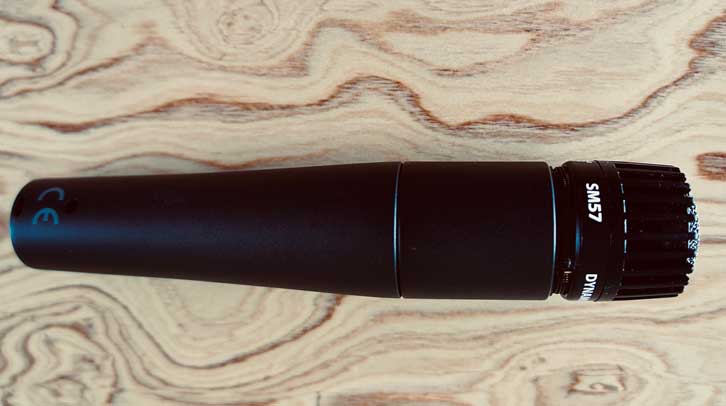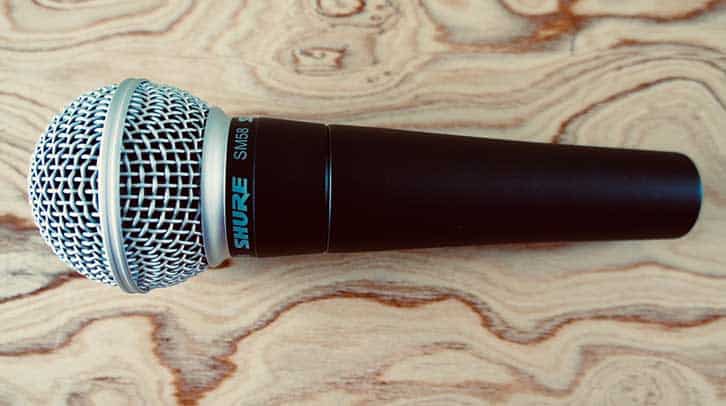Shure SM57 vs SM58: Intro
If you’ve seen someone on stage with a microphone, they were probably using an SM58 or SM57. The president of the United States uses an SM57. John Lennon recorded most of his studio vocals on an SM57. SM58s are used by nearly everyone in live settings. Almost every recording you have listened to probably used one of these two microphones somewhere in the studio.
But let’s say you can only buy one. Which one is for you? Is either one for you?
See here for all our reviews of audio gear for live performance and recording.
SM57
SM58
Our Rating
4.9 (out of 5)
4.8 (out of 5)
Pros
pros SM57
- THE utility mic: gives you a “good enough” sound in nearly every situation
- Built like a tank and nearly all the parts are replaceable
- Iconic sound with guitar amps
- Great value
pros SM58
- The most popular vocal microphone
- Built like a tank and nearly all the parts are replaceable
- great value
- can also work as a utility mic around the studio or stage, depending on taste.
Cons
cons SM57
- Not as much detail captured as a condenser mic and higher-end dynamic mics.
cons SM58
- There are more detailed, crisper vocal mics out there, albeit, at a higher price.
Shure SM57
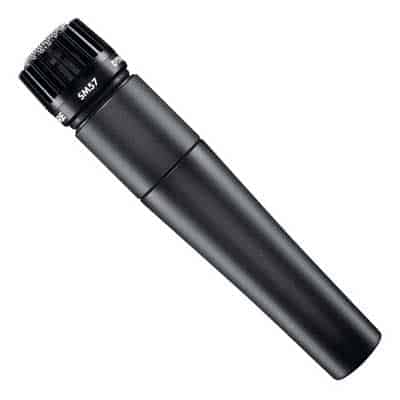
Check Availability and Price in Your Region:
US and Canada
UK and Europe
Shure SM58
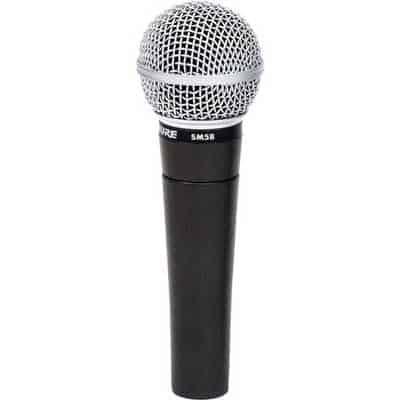
Check Availability and Price in Your Region:
US and Canada
UK and Europe
Bottom Line
Neither of these mics is better than the other. Both mics reproduce a sound in the range of pretty good to great in most situations. The SM58 is generally better for vocals and the SM57 is for everything else. Your personal taste will decide how, when, and where you want to use them. But rest assured, you’re getting a quality mic with either one.
Who these Mics are for
If you’re looking for a durable, do-it-all, affordable workhorse for live and studio use, these are your go-to microphones. With good mic placement and a little trial-and-error with how you play, how you sing, or how you speak, you can get sound in the range of good to really good which can then be enhanced in post-production.
Who these Mics are not for
If you’re looking for a studio mic to capture loads of detail for vocals or stringed instruments or piano, a nice condenser like the Neumann TLM 102 or a do-it-all budget condenser like the AKG P420 (full review of the AKG P420) would be a more obvious choice. Or if you want something that gives a more accurate reproduction, not so radio-voice colored, a condenser would be better. For live gigs, I prefer the Sennheieser e935 to the SM58 for vocals, but the SM58 won’t do you wrong.
For podcasters, both of these microphones require an audio interface with a preamp to function properly. If you’re looking for a standalone, plug-and-play option, these are not for you. Something like the Blue Yeti might be more what you’re looking for.
What’s the difference?
Shure labels the SM58 as a ‘vocal’ mic and the SM57 is commonly referred to as an ‘instrumental’ mic but these are just general guides. Both the SM57 and SM58 can be used for vocals, drums, acoustic instruments, amp cabinets – almost anything that needs recording.
On the outside, the grille is the primary difference – that’s the top metal screen that screws on and off. The SM57 has a flat grille where the SM58 has a ball grille. The SM58’s ball grille has a built-in wind and pop filter for vocals. The flat grille on the SM57 allows a closer, stronger proximity effect (the increased bass that happens on dynamic microphones as the source gets closer to the microphone’s diaphragm) The flat grille on the SM57 also causes a frequency response boost above 5kHz. This creates more brilliance and sibilance.
The Unidyne III capsules inside are identical.
Alternatives to These Mics
Sennheiser E935
A dynamic vocal stage mic that brings more detail than the SM58. Tough competitor in the same class.
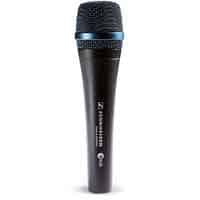
Check Price:
Shure KSM 8
A Vocal Dynamic Mic, a class up. Controlled proximity effect, natural sound.
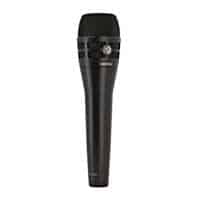
Check Price:
Telefunken M80
Also a class up, with great detail. Sounds like a condenser and it comes in gold!
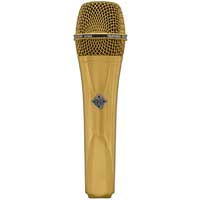
Check Price:
Beyerdynamic M88
SM57 alternative, a class up. Fast transient response. Versatile, excellent for kick drums and everything in your studio.
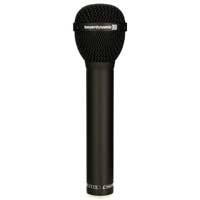
Check Price:
SE V7
Vocal dynamic competitor that many swear by. Has a more pronounced high end. Same price range as these mics.
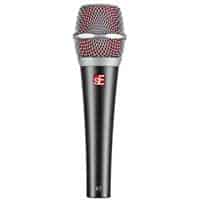
Check Price:
Build / Durability
Both of these workhorses are known for being ridiculously durable. Check out the SM58 torture test below where they drop it from a roof, pour beer on it, microwave it, and more.
Both mics have what Shure calls a “pneumatic shock-mount system”. This insulates the internal cartridge from mechanical vibration. As a result, Shure SM series mics have lower handling noise.
Sound
When considering any microphone, the frequency response chart can help to size up what you’re getting. By listening to the two in our test examples below and observing the differences here visually you can get a good idea of the sonic differences.
SM57 vs SM58 Frequency Response
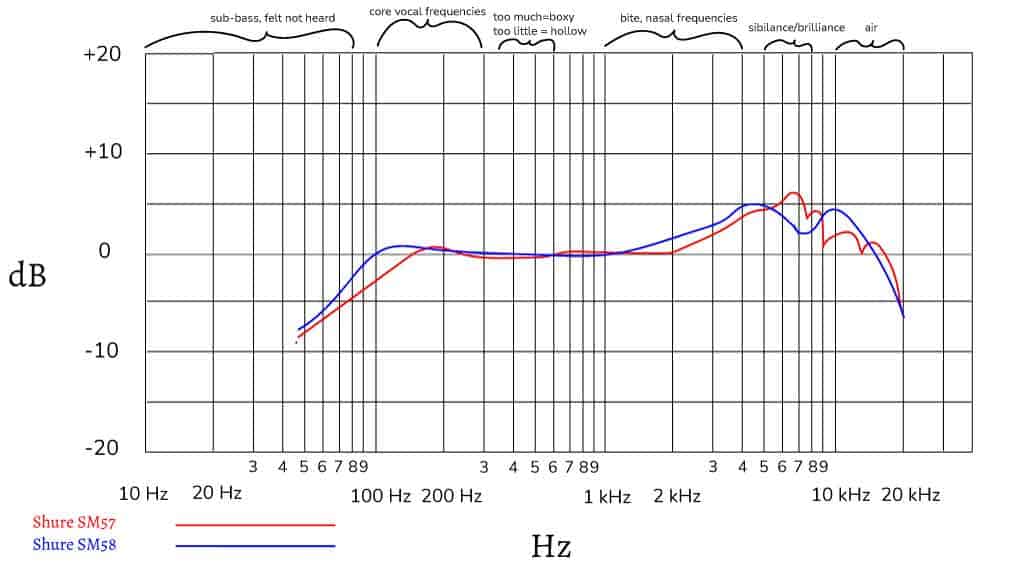
SM57 vs SM58: The Test
We used a Universal Audio Apollo Solo powered Interface recorded with Logic Pro X. There is no EQ or compression applied to any of the audio clips here. We adjusted the gain from the audio interface to taste. The guitars were a Martin steel-string acoustic guitar and Fender Strat plugged into 40 Watt Fender Champ.
Full disclosure: We fully acknowledge that there is no one way to use a microphone. Mic placement, how you play or sing, not to mention EQ, compression, Impedance, pre-amp settings can all have dramatic effects on the final result.
Shure SM57 vs SM58: Vocals
Sung Vocals Test
Listen to the presence boost on the SM57 with sung vocals. The vocals on the SM58 have more bite, more nasal resonance, and less air in comparison.
Spoken Vocals – Sibilance / Brilliance
Sibilance is the whistling sound of an “s” in the voice. This is also the same frequency range that is referred to as brilliance. Notice the increased sibilance and brilliance on the SM57.
Mic direction / Neighboring noise
Both microphones use a cardioid pick-up pattern, effectively picking up only what’s in front of the microphone. For example, you can barely hear the acoustic guitar I’m playing in the above sung vocals examples. This is ideal for live performance or in an untreated room in your home studio. We test how well this mic insulates from other sound sources below.
The flat grille shape of the SM57 provides a slightly more sound isolation from the sides and rear.
Proximity Effect
With dynamic microphones the closer the microphone is to the source, the more the bass boosts. With voices, this creates that “late-night radio” voice. For instruments, it can make for a thicker, punchier sound. Depending on the instrument or voice, this might be desirable or undesirable.
Versatility
Acoustic guitar test
I was surprised by this test because I really prefer the SM58 here. The proximity effect helps boost the bass slightly, which enhances the acoustic guitar nicely. Also, I find the acoustic guitar doesn’t need as much air as the SM57 provides.
Electric Guitar (Clean) Test
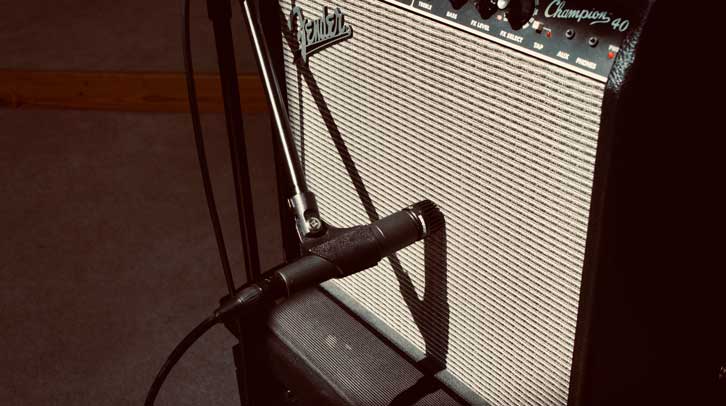
The following tests on electric guitar confirm my opinion that the classic sound of an SM57 on a guitar cab is the only set-up I want to hear.
(forgive my buzzy Strat)
Electric Guitar (Distortion) Test
What they say about the SM57 & SM58
We asked around the biz and got a few words from some pros who use this mic:
Needs no introduction or comment. Simply the best utility mic on the planet. [About the SM57]
Steve Bolmann, Sound Engineer
I use it to mic my guitar amp, snare drum, and vocals because of its clear and precise reproduction. I haven’t handled my SM57s very well, and they sound as good as ever. And, the mic never depreciates in value.
Rodney Langton, Rocker, Producer
I rap with an SM58 and I’ve tried a lot of mics. No other tool can balance against unpredictable live situations so well. I’ve dropped this mic, licked it, sweat on it, and it still sounds great.
C Wack, Rapper
Frequently Asked Questions
So, which mic should I use? SM57 or SM58?
With the SM57 you’ve got a mic that records nearly anything and gives you a sound somewhere in the range of respectable to really good, at a great price. With the SM58 you’ve got the most popular vocal mic ever, built with the same Unidyne III capsule as the SM57.
The SM58 will always give you a decent sound on vocals but it lacks the kind of detail of competitors like the Sennheiser e935.
If you have to choose between these two mics, choose the SM58 for vocals, and the SM57 for everything else. If you prefer the sound of the SM57 for vocals, you can get a wind and pop filter made by Shure that attaches, effectively making it a vocal mic.
If you’re looking for a podcast mic, a set-up with either the SM58 or SM57 (with pop filter) can give you usable results. Note, you’ll need an audio interface for gain to connect it to your computer.
If your only recording needs are for podcasting, the Shure X2U signal adapter with preamp is a workable low-budget choice.
An SM58 sounds cool with electric guitars, but not at all as cool as the SM57 to my ears. The sound of an SM57 paired with electric guitars has become an iconic guitar sound for a reason.
I personally, prefer the color of an SM58 on an acoustic guitar for folk and indie styles. Most sound engineers will give you some kind of super-cardioid condenser mic like an AKG C451 to mic acoustic guitars. The added proximity effect of the SM58, however, with not too much air on top, can work to your advantage.
There are many ways to mic a drum kit, however, it is standard practice in most set-ups to use a couple of SM57s for the snare and toms. This gives you a “good enough for post-production” sound in any situation.
What is a Dynamic Microphone?
Both the SM57 and SM58 are dynamic microphones. The inner workings include a coil attached to a thin strip of metal called the diaphragm. Dynamic mics require more sound to make the coil and diaphragm vibrate together. Condenser microphones only have a diaphragm, and therefore require less sound to vibrate. This means this type of mic:
- is preferred for live gigs because it can withstand louder noises and is less sensitive to room noise and neighbouring sound sources
- does not require phantom 48V power to function properly
Useful Accessories
Cloudlifter CL-1 – adds about 20 dB of clean gain and reduces feedback
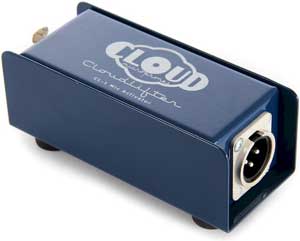
Replacement grille for SM58
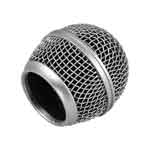
Windscreen and Pop Filter for SM57
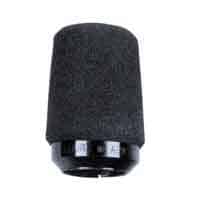
Shure SM57 Specs
Type: Dynamic
Polar Pattern: Cardioid
Sensitivity: (at 1000 Hz Open Circuit Voltage):
-54.5 dBV/Pa (1Pa = 94 dB SPL), 1.9mV
Impedance: (low) 150Ohms (310 actual)
Connector: XLR
Shure SM58 Specs
Type: Dynamic
Polar Pattern: Cardioid
Sensitivity: (at 1000 Hz Open Circuit Voltage):
-54.5 dBV/Pa (1Pa = 94 dB SPL), 1.85mV
Impedance: (low) 150Ohms (300 actual)
Connector: XLR
Questions or Comments?
Join the discussion here on Facebook.
Shure SM57
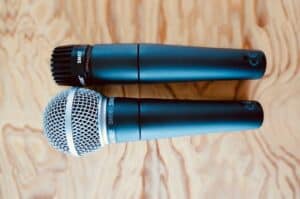
A mic that records nearly anything and gives you a sound somewhere in the range of respectable to really good, at a great price.
Product SKU: 270102000000000
Product Brand: Shure
4.9
